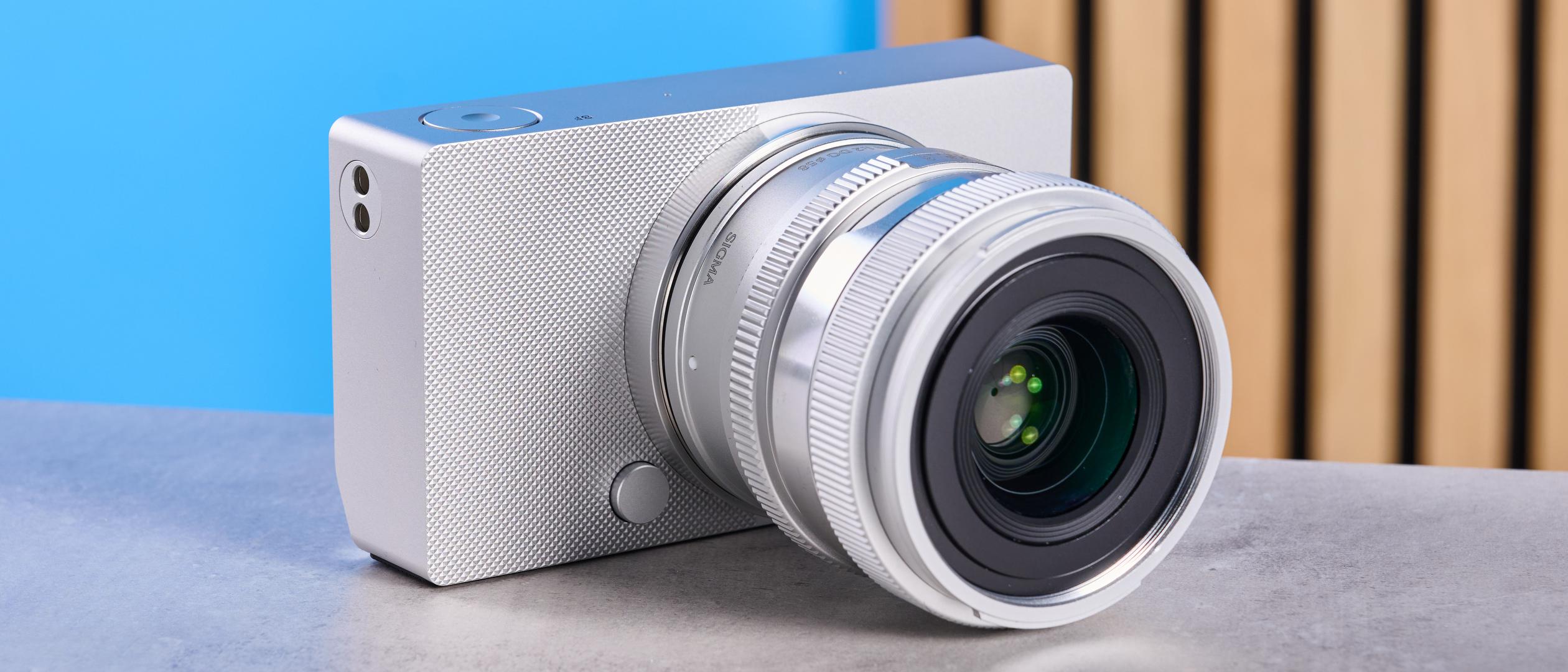Tom's Guide Verdict
The Sigma BF takes beautiful photos with its 24.6MP sensor and it comes with 13 built-in Color Modes for every mood. Video capabilities are strong, with 6K/30P and L-Log available. The camera’s minimalist design, controls and user interface add more fun to photography, and shooters have 230GB of internal storage at their disposal. However, the camera has a short battery life, there’s no IBIS, and ergonomics aren’t the best.
Pros
- +
Stunning image quality
- +
Accurate hybrid AF
- +
Minimalist design, solid build
- +
Smooth 6K and L-Log video
- +
230GB internal storage
Cons
- -
Poor ergonomics
- -
No in-body image stabilization
- -
Short battery life
Why you can trust Tom's Guide
It’s no secret that the Sigma BF has been my most anticipated camera of 2025. I’ve wanted to get my hands on it ever since I got wind of its announcement, and I recently got to spend a week testing it.
The Sigma BF is unlike any other camera out there: it’s carved out of a single aluminum ingot, and it oozes luxury and minimalism. Inside is a 24.6MP 35mm full-frame CMOS sensor that captures stunning photos, and it can record 6K/30P video too.
With an accurate, fast autofocus system that can track animals and humans and 13 color modes, a straightforward user interface and limited physical controls, the BF is a joy to use.
However, the camera doesn’t have an SD card slot as it comes with 230GB of internal storage, there’s no in-body image stabilization, and handling can be slightly awkward due to the lack of a sculpted grip.
Is it still one of the best mirrorless cameras out there? Read my full Sigma BF review to find out.
Sigma BF review: Cheat sheet
- What is it? A hybrid mirrorless camera carved out of a single block of aluminum
- Who is it for? For people who want a minimalist camera and have a lot of money to spare
- How much does it cost? The Sigma BF will be available to buy April 2025 onwards for $1,999 / £1,969
- What do we like? The stunning image quality, minimalist design, smooth 6K video, fast autofocus, 230GB of internal storage and straightforward user interface
- What don’t we like? Awkward ergonomics, lack of IBIS, and short battery life
Sigma BF review: Specs
Specs | Sigma BF |
|---|---|
Price | |
Colors | Black, silver |
Sensor | 24.6MP 35mm full-frame CMOS |
Stabilization | Electronic (video only) |
AF system | Hybrid, Phase and Contrast Detection |
Focus modes | AF-Single, AF-Continuous, Manual Focus |
Viewfinder | No |
Display | 3.2-inch Color TFT touchscreen, approx. 2.1 million dots |
ISO range | 100-102,400 |
Exposure compensation | ±5 EV (in 1/3 increments) |
Max video resolution | 6K/30fps | 4K/30fps | FHD/120fps |
Ports | USB-C |
Internal storage | 230GB |
Wireless/bluetooth | No |
Max shooting speed | 8fps electronic |
Max shutter speed | 30s to 1/25600s (stills, electronic) |
Battery life (Stills, CIPA) | 260 shots |
Size | 5.1 x 2.9 x 1.4 inches |
Weight | 13.7oz (body only) |
Sigma BF review: Price & availability
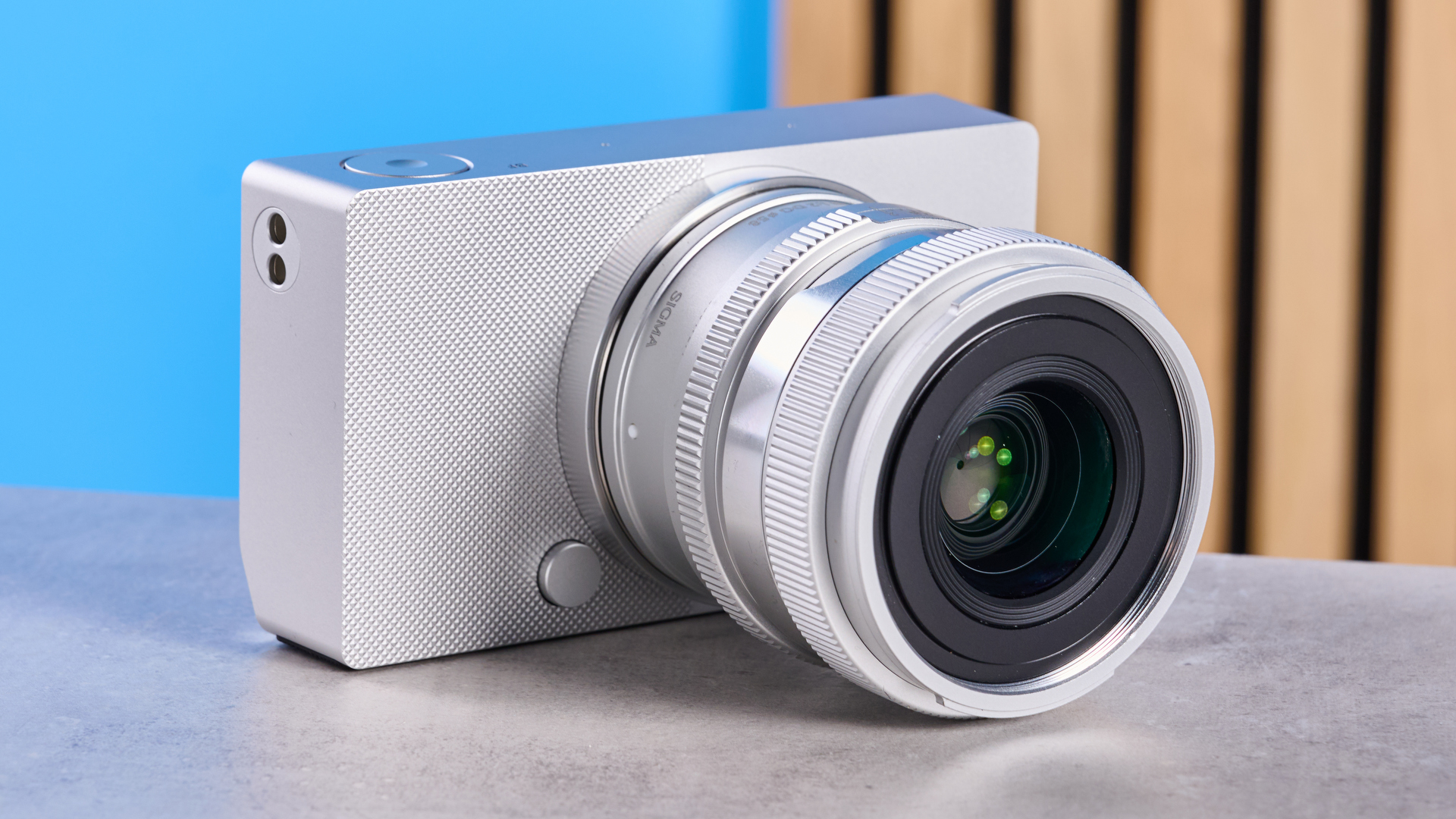
The Sigma BF was announced in February 2025 and goes on sale in April. It’s available to pre-order for $1,999 / £1,969 (body only) and comes in silver and black colorways.
I tested the BF with the new Sigma Contemporary 35mm F2 DG DN lens which costs an additional $639 / £569. Alongside this, Sigma is also launching nine new lenses in matching colors.
The BF occupies a unique position in the market. Visually, there isn’t another camera that looks like it. Its price, full frame sensor and feature set, however, pit it against the likes of Panasonic Lumix S9 ($1,499), the Nikon Z f ($2,000), the Sony A7C II ($2,198) and the Panasonic Lumix S5IIX ($2,199).
Sigma BF review: Design & build
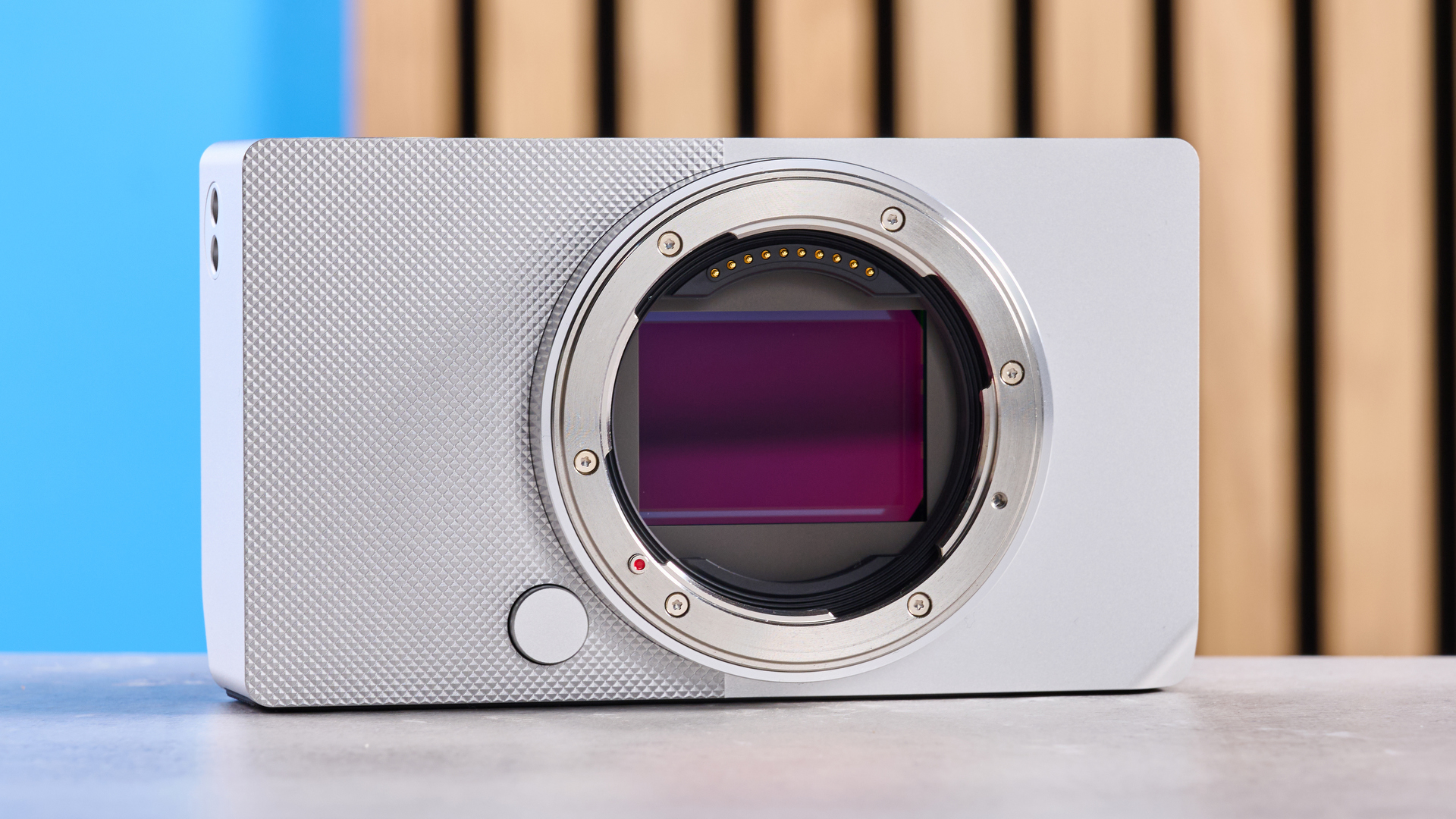
A common trend I’ve seen online regarding the way the Sigma BF has been described is that it looks like Apple made a camera — and that’s not incorrect in the slightest. The Sigma BF oozes Cupertino minimalism.
It’s carved out of a single block of aluminum which means the company can manufacture only seven units a day, adding to the luxury factor.
The only plastic in the construction of its bottom plate where the battery compartment lock is located. It has a textured body which feels premium to look at and touch.
Its aluminum build makes the camera heavy, weighing 13.7oz (body only). It’s lighter than the 18.24oz Sony A7C II, the 22.9oz Nikon Z f and the 17.1oz Panasonic Lumix S9.
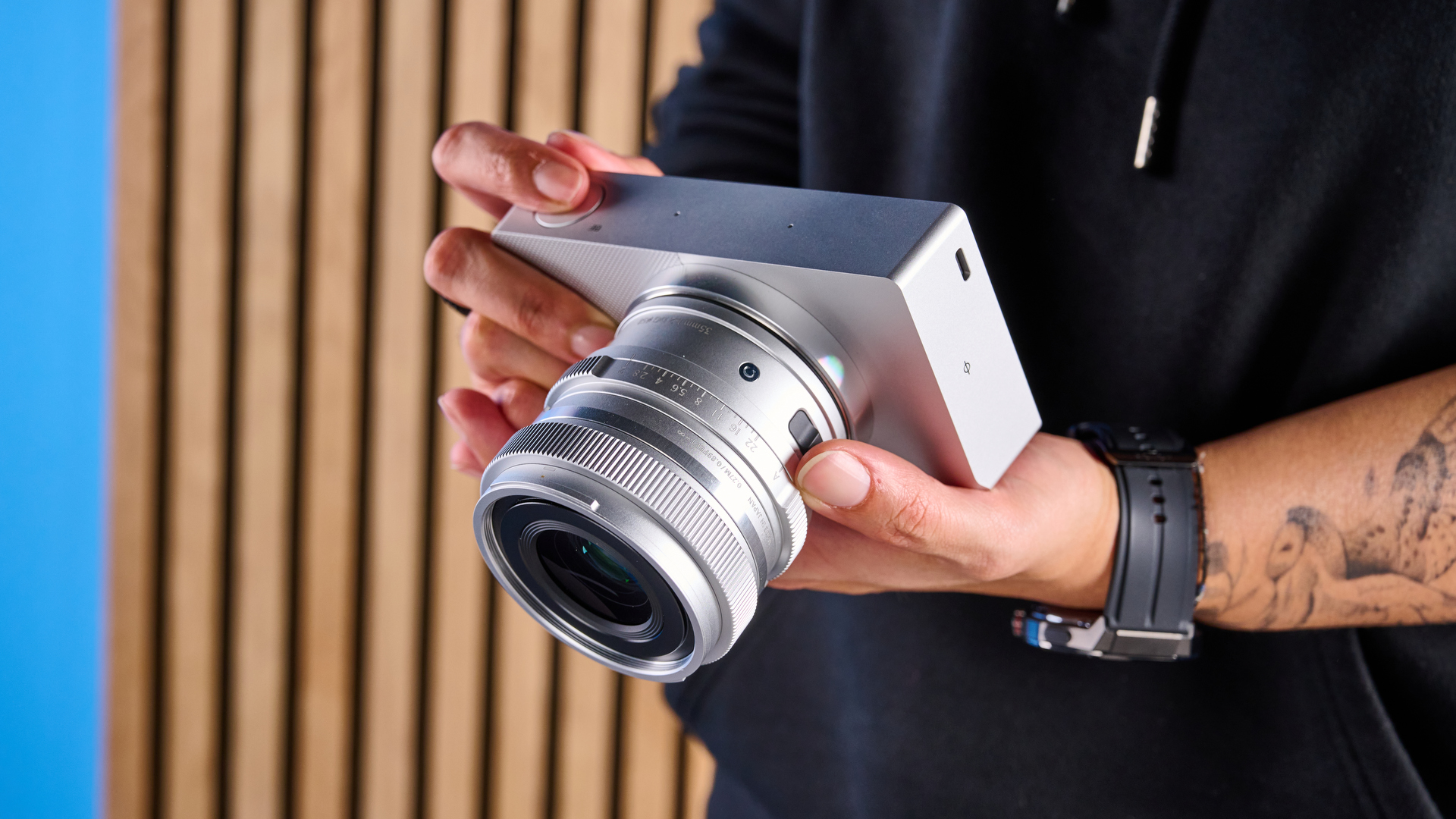
The Sigma BF measures 5.1 x 2.9 x 1.4 inches which, to me, is the ideal size for a camera of its stature. It’s similar in size to the Sony A7C II (which is slightly wider), and it’s easy to carry it around in a backpack or handbag.
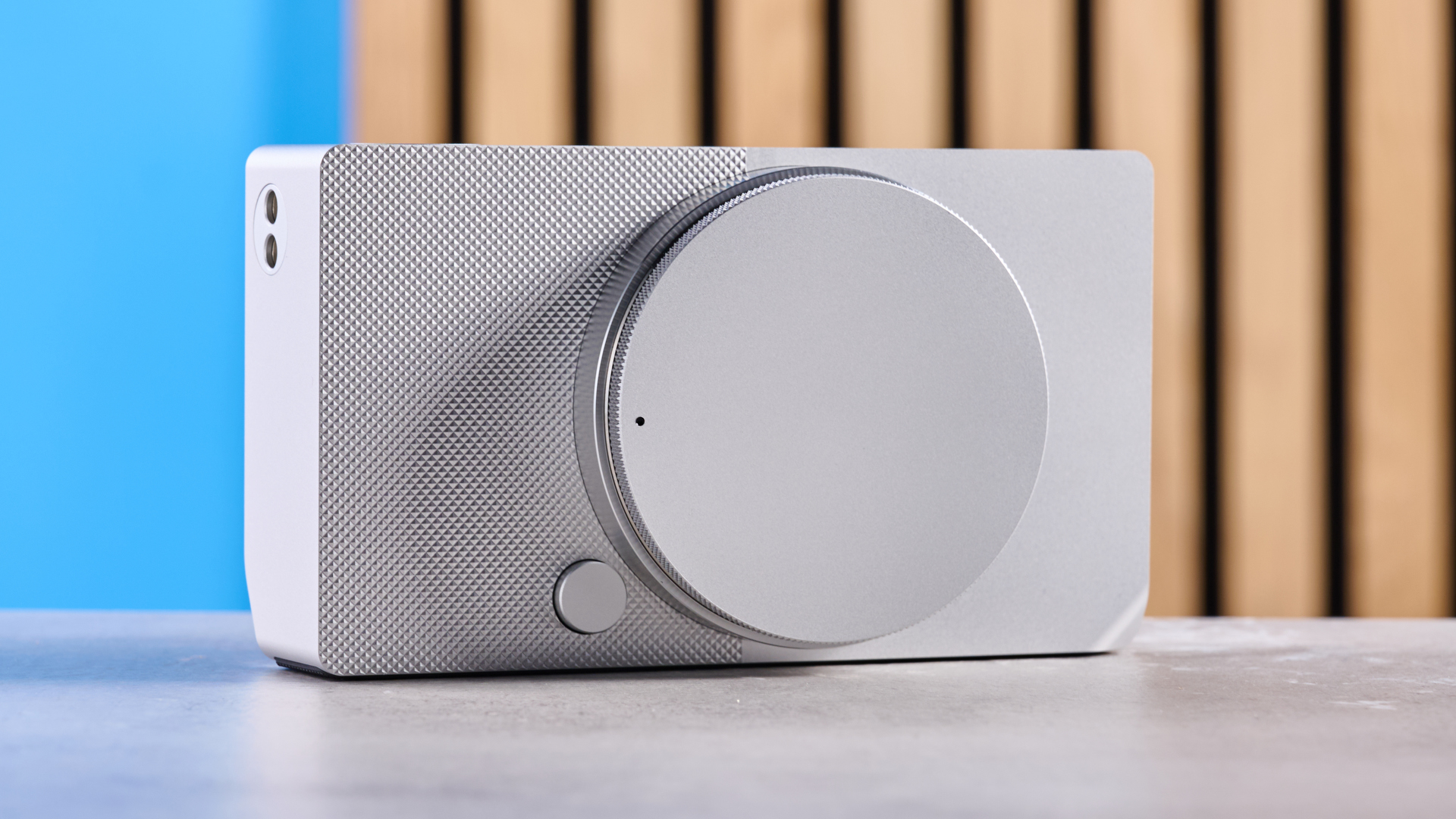
Sigma says the BF has environmental sealings on its body and lenses which provide resistance against water and dust. I had no issues using the camera in light rain and on sandy beaches. The camera also comes with a magnetic aluminum lens cap that creates a solid seal, preventing dust from making its way to the glass.
Ergonomics
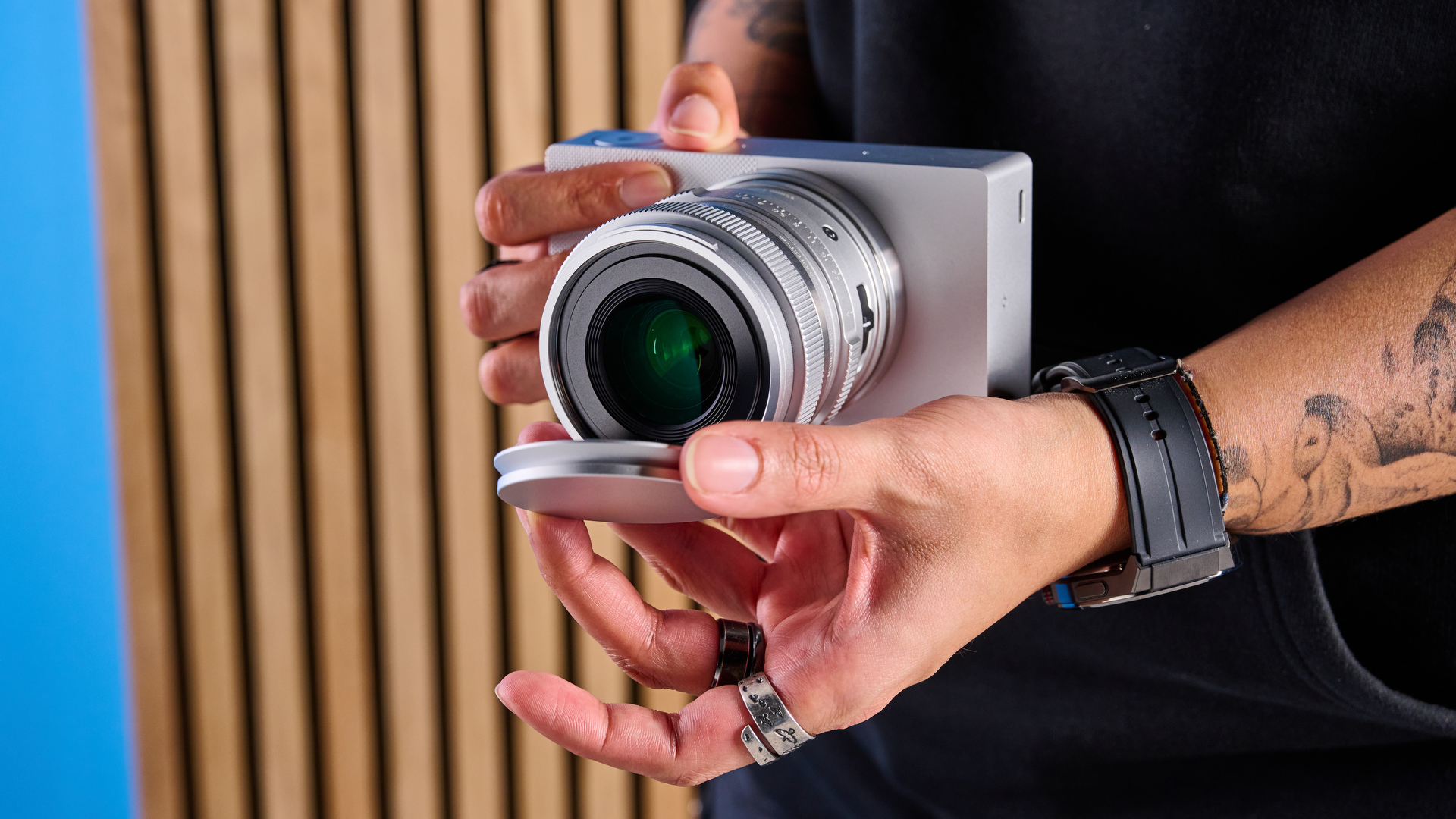
My biggest gripe with the Sigma BF lies in its ergonomics, which are non-existent, and I noted this in my first impressions article too.
Unlike the cameras I’ve mentioned which have sculpted grips for better handling, the Sigma BF is virtually flat. All you really get is a protruding grip to rest your thumb on, located on the back.
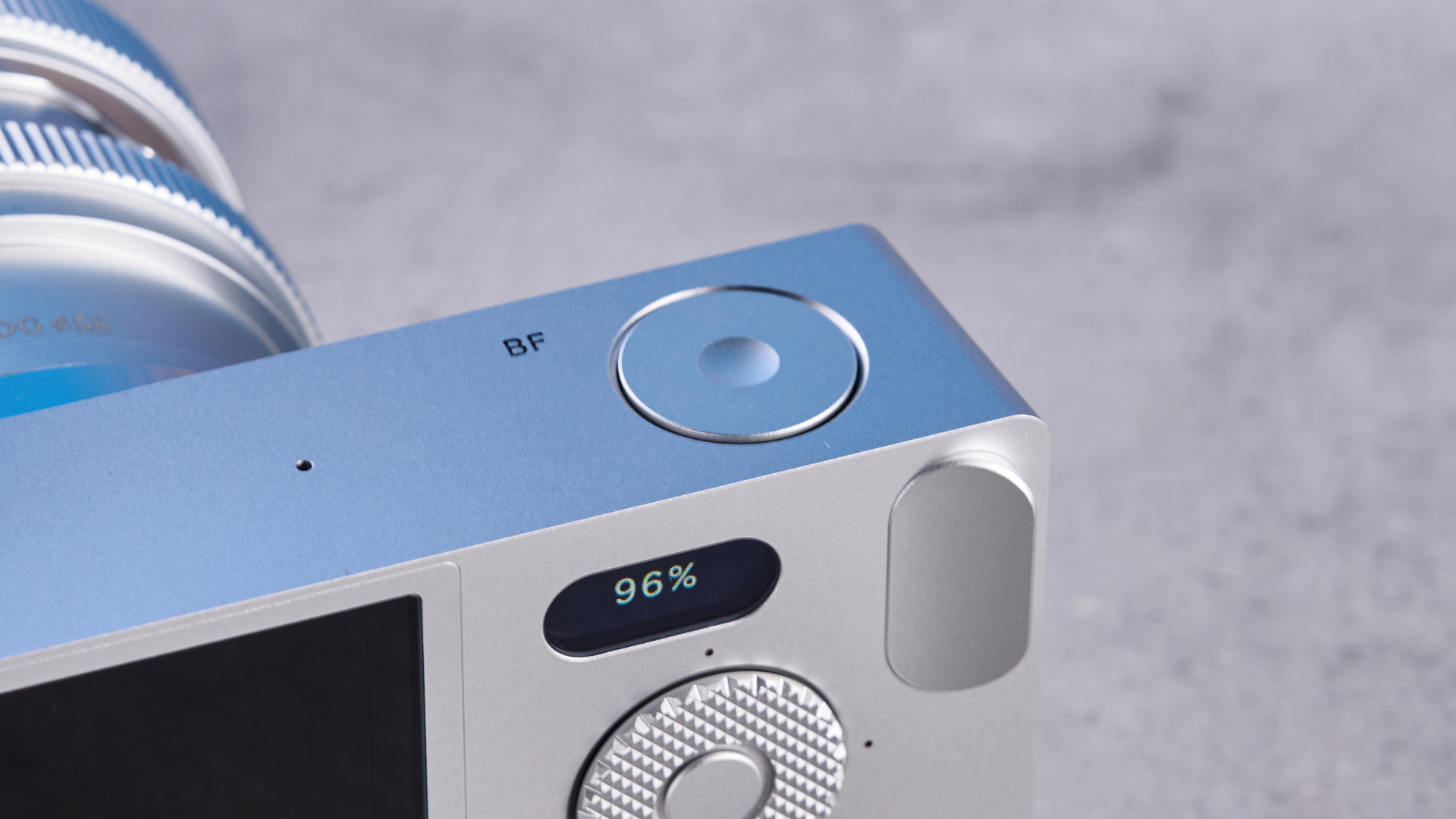
I appreciate the bottom-right corner that has been chopped off so that the camera doesn't poke into your skin. But I found the camera difficult to use with just one hand, constantly worrying that it was going to slip out of my hand.
I used the camera extensively on a weekend away with my partner, and I eventually felt more comfortable and confident using it with both hands. But this is still far from the most comfortable camera I’ve used.
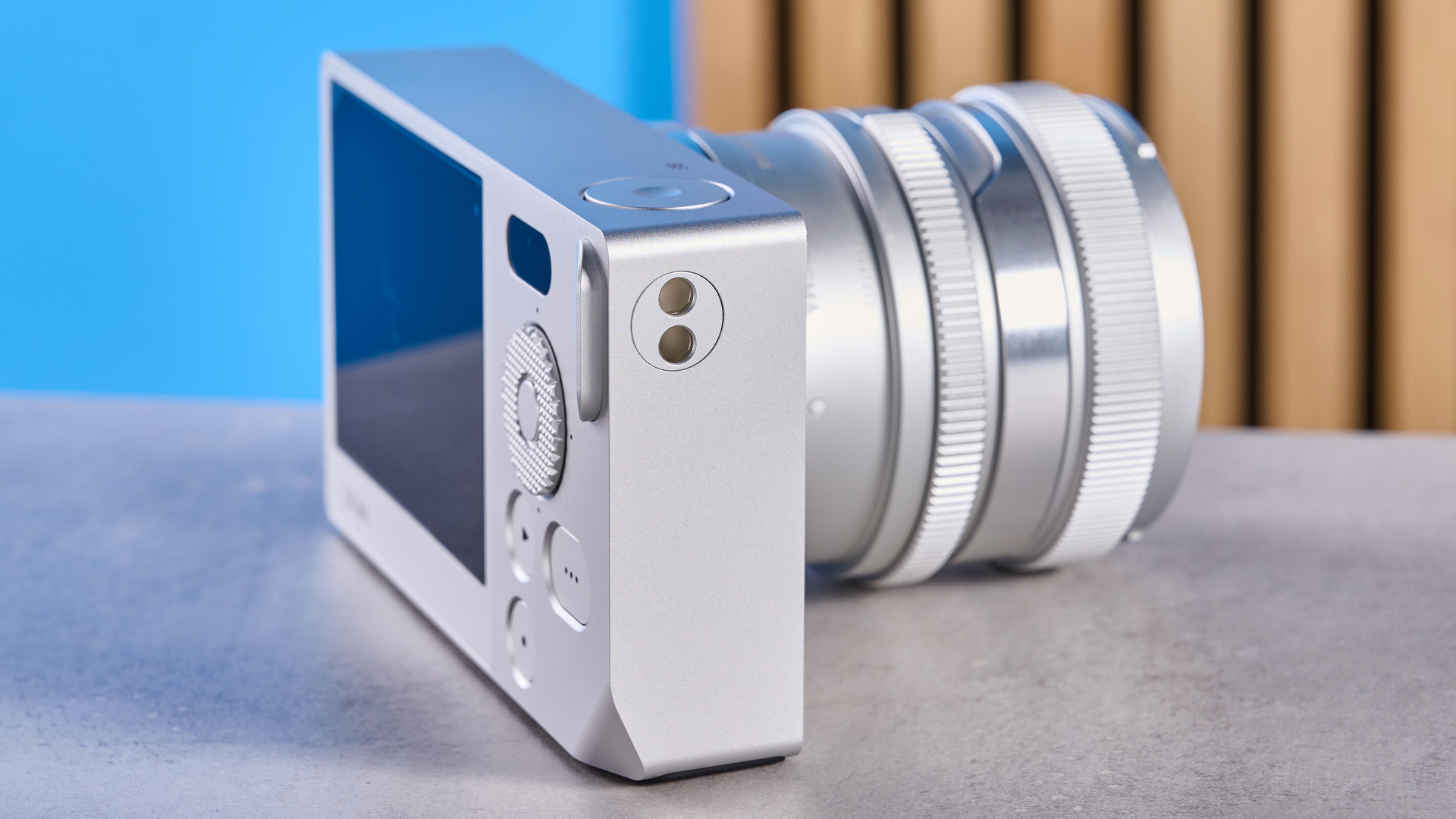
On its right edge, the Sigma BF has two holes for you to loop a wrist strap through, but there’s none on the left edge which means you can’t use a camera strap. I found this frustrating.
With the lens on, the camera’s too big to slip into a pocket. I found myself constantly putting the Sigma BF back into my backpack. I would have liked to be able to carry it around my neck.
Ports
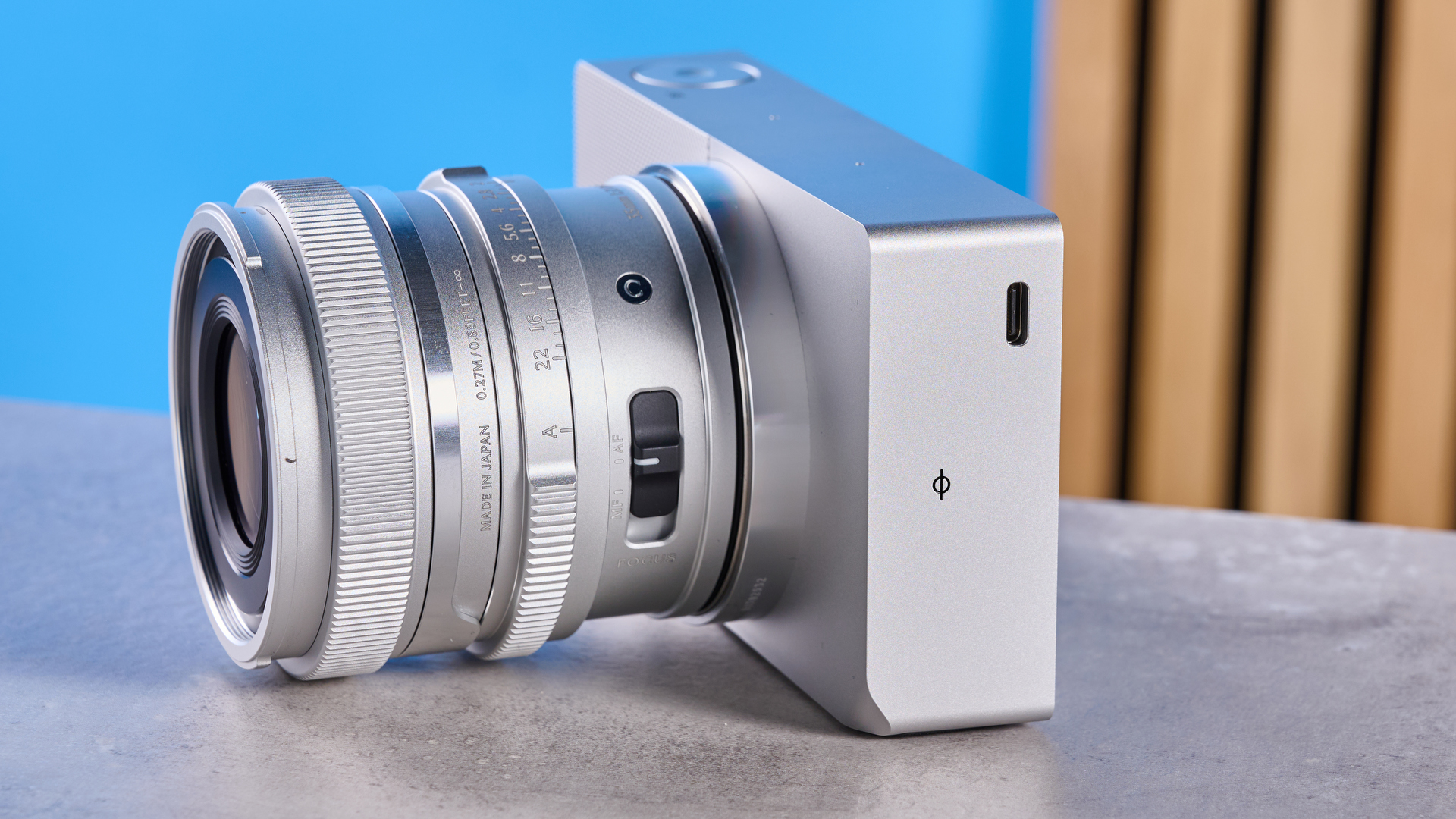
In line with the minimalist design, the camera doesn’t have much going on in terms of ports. The left edge of the Sigma BF has a USB-C port for charging and image transfer. This port can also be used for webcam streaming via the UAC/UVC standard.
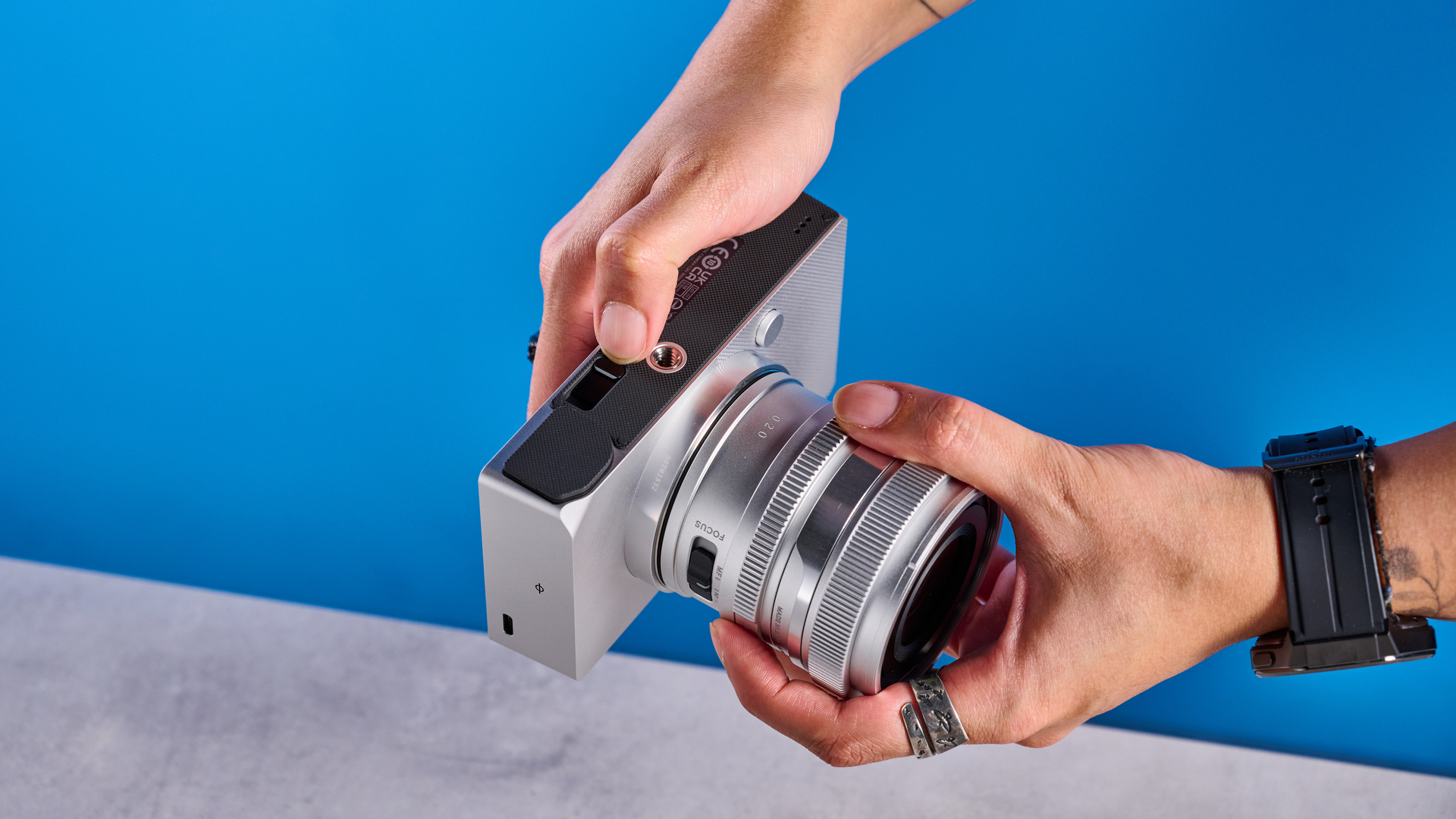
The bottom plate houses the BP-81 battery pack which can be removed by pushing the battery compartment lock.
It’s important to note that the Sigma BF doesn’t have a slot for an external SD card. Instead, the camera comes with 230GB of internal storage. Sigma says that the camera is capable of storing 14,000 JPEGs, 4,300 lossless compression RAW DNG files or 2.5 hours of 6K/30P video.
While that’s more than sufficient storage for most photographers, some may feel shortchanged by the inability to expand storage with an SD card, especially if shooting video.
Monitor
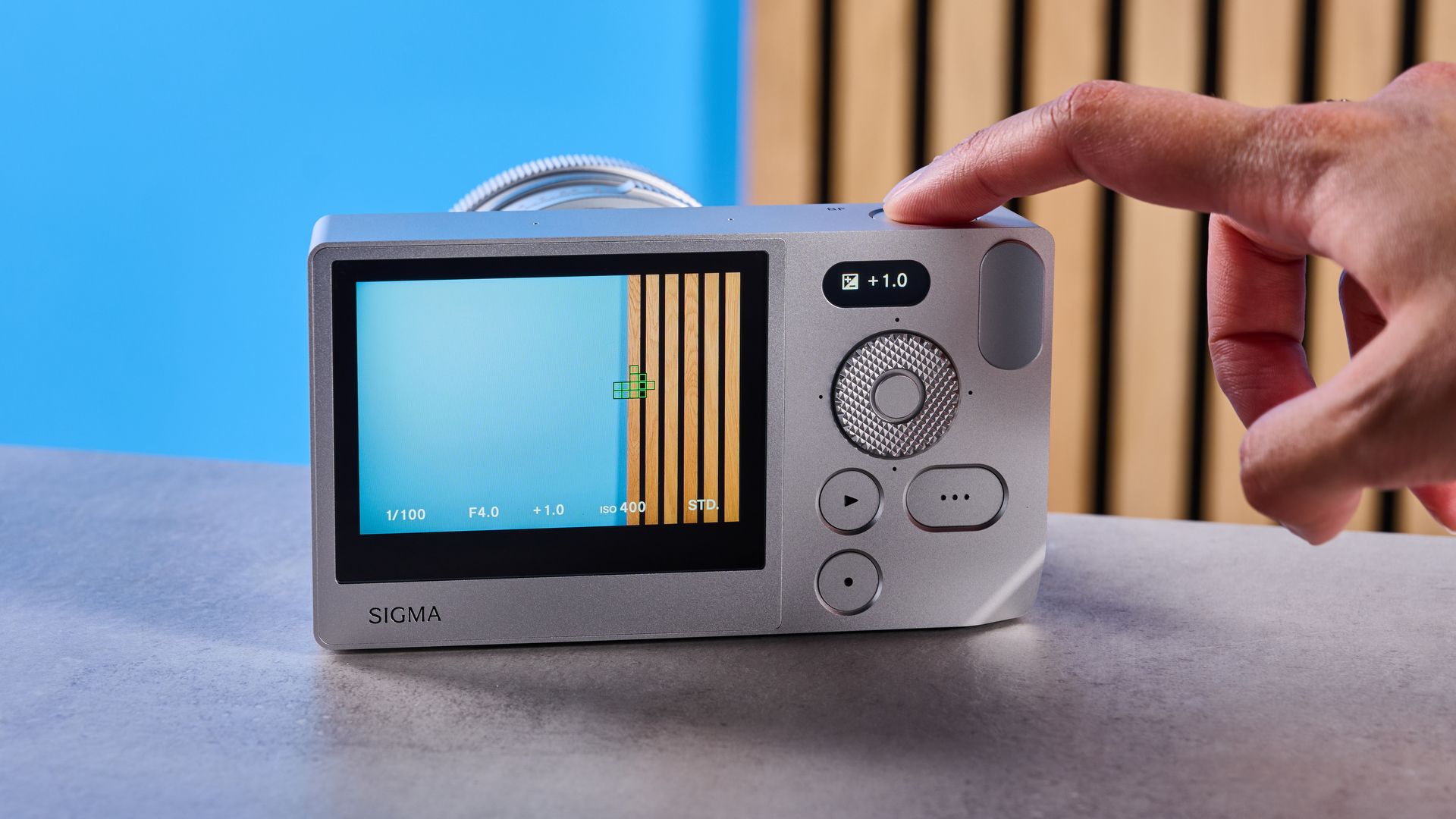
On the back, you’ll find a 3.2-inch Color TFT touchscreen that’s bright, sharp and detailed, boasting a 2.1-million-dot resolution. This is similar to the pricier Sony A1 II’s ($6,499) and the Nikon Z f’s screens, and higher than the Sony A7C II’s and the Sony A7 IV’s ($2,499) 1.03-million-dot and the Panasonic Lumix S9’s 1.84-million-dot displays.
But the camera doesn’t have a viewfinder, which means you need to rely on its LCD monitor to frame shots. While the monitor is very bright, I couldn’t always see what the camera was pointing at when I was trying to shoot swans at low angles or tree lines right above me, which resulted in me missing shots.
Menus and UI
The Sigma BF’s user interface is simplicity itself. You can choose whether you want shooting information (shutter speed, ISO, etc.) displayed on the monitor, enable and disable grid lines, center mark and electronic level. The interface never feels overwhelming or like there’s too much going on.
The main system settings menu is extremely straightforward too. The black and white background and text are easy to read, and I like that Sigma hasn’t used all the shades of the rainbow to distinguish between settings as some cameras do.
A little LCD screen above the navigation wheel shows you the current setting that will be changed if you rotate the dial. And with that, let’s dive into the Sigma BF’s controls.
Sigma BF review: Controls
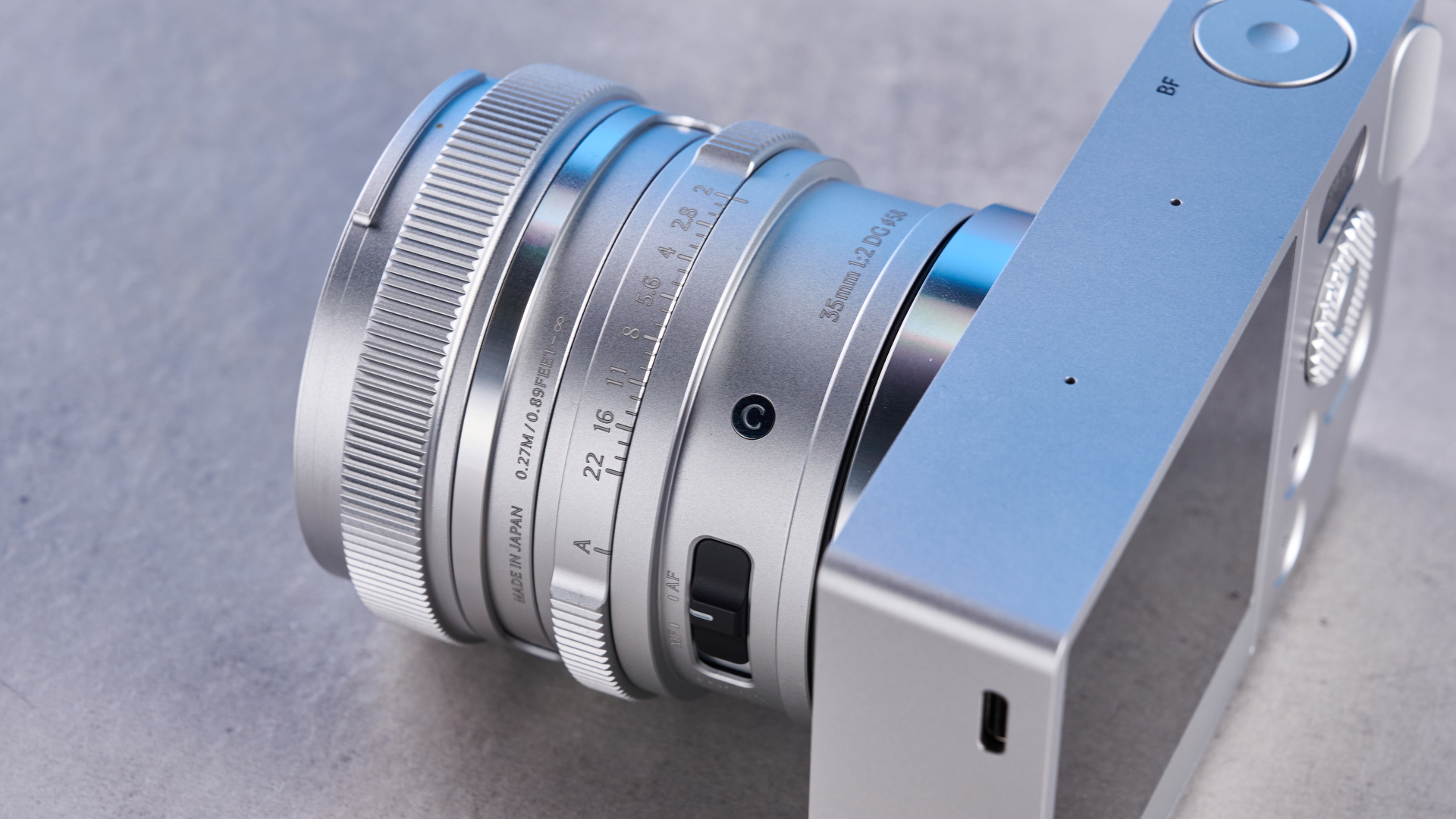
If you’re looking for a camera that takes stunning photos without overwhelming you with dials, then the Sigma BF is the one for you. It simplifies photography, and I’m all for it. Let’s start with the top plate first. It houses the shutter button which feels soft to press while giving good tactile feedback.
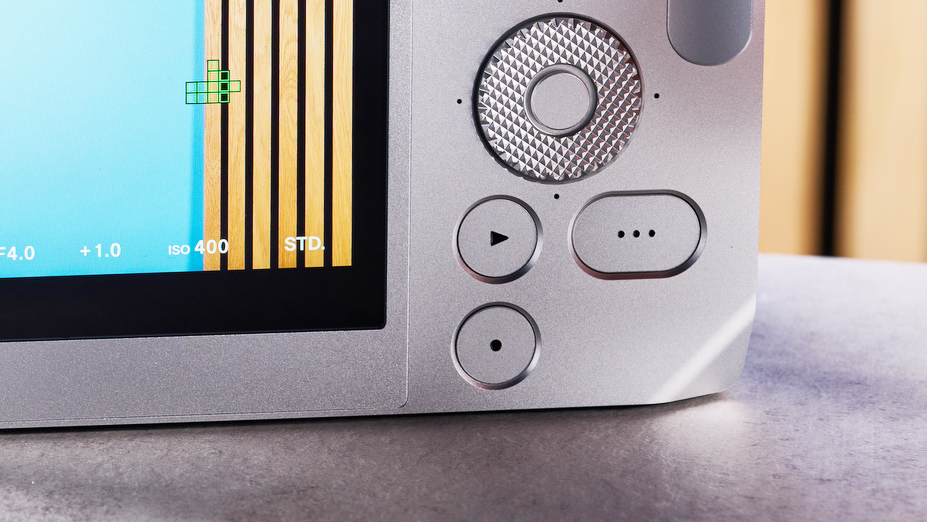
Next to the monitor on the back lie all other controls. These include playback, power and settings buttons, and a navigation wheel which doubles as the only dial on the camera. The dial lets you quickly cycle through the various settings.
Pressing right, left, up or down takes you to ISO, shutter speed, shooting modes, EV, Color Modes, white balance and more. Then it’s just a matter of rotating the dial to change that particular setting. For example, press right and the ISO will be selected. Rotate the dial and you’ll be able to change the ISO value. It works similarly for every other shooting setting.
It simplifies the shooting process and, in a way, it has made photography even more fun than I originally found it.
As someone who’s used to shooting on cameras that have dedicated dials for shooting settings, I love this system. It simplifies the shooting process and, in a way, it has made photography even more fun than I originally found it.
I also love the playback button. Simply placing a finger on it — not pressing it — shows the last photo you took. This became second nature for me as I could quickly preview the photo I’d just taken and then decide whether I wanted to retake it.
Sigma BF review: Autofocus performance



The Sigma BF has a hybrid autofocus system that uses a combination of 1,215 points of phase-detection AF for speed and 345 points of contrast-detection AF for accuracy. Autofocus is a step up over previous Sigma cameras and the BF can track cats, dogs, birds and humans.
It works very well, as does eye detection. No matter the lighting conditions, the camera picked up my partner’s eyes and face as soon as I pointed the camera at her. You can see the examples in the gallery above.
The images are sharp and in focus, and I love how the background blurs in the first two photos, and the way the foreground blurs in the third (one of my favorite shots I’ve ever taken, by the way).



The Sigma BF features auto subject detection, so you don’t need to manually change the subject from, say, human to animal/bird when switching between subjects. Animal AF works extremely well, as you can see in the photos above.
The Sigma BF accurately and quickly locked onto the bird’s eyes and bodies as soon as I pointed the camera at them. The birds are in focus and stand out as the primary subjects while the background blurs beautifully.
Sigma BF review: Stabilization
The Sigma BF doesn’t feature in-body image stabilization (IBIS) which you’ll find in the Nikon Z f (5-axis, 8-stop), the Panasonic Lumix S9 (5-axis, 6.5-stop), the Sony A7C II (5-axis, 7 stops) and the Sony A7 IV (5-axis, 5.5 stops). Instead, the camera utilizes electronic image stabilization (EIS) for video only.
EIS incurs a 1.25x crop, thereby limiting the angle of view. EIS stabilizes footage by recording the whole frame, then cropping the recorded frames and lining up frames with the extra space provided outside the recorded frame by the crop.
In the compilation above, the first video was shot with the EIS off and the second with it enabled. The second clip is stable and smooth but it’s heavily cropped, which I’m not fond of.
There’s a tripod thread on the Sigma BF’s bottom plate in case you want to use a monopod or tripod for shooting at slow shutter speeds.
Sigma BF review: Image quality
The Sigma BF is equipped with a 24.6MP 35mm full-frame CMOS sensor and it takes sharp, detailed photos. In terms of shooting rates, it has an 8fps electronic shutter which isn’t rapid but this isn’t a hardcore sports or wildlife camera, so it should suffice most people’s shooting needs.





The Sigma BF’s 24.6MP resolution is similar to that of the Panasonic Lumix S9’s 24.2MP and the Nikon Z f’s 24MP sensors. It’s slightly lower than the Fujifilm X-M5’s and the Sony ZV-E10 II’s 26MP resolutions. Still, it takes gorgeous photos with plenty of detail, and you can see a few examples in the gallery above.



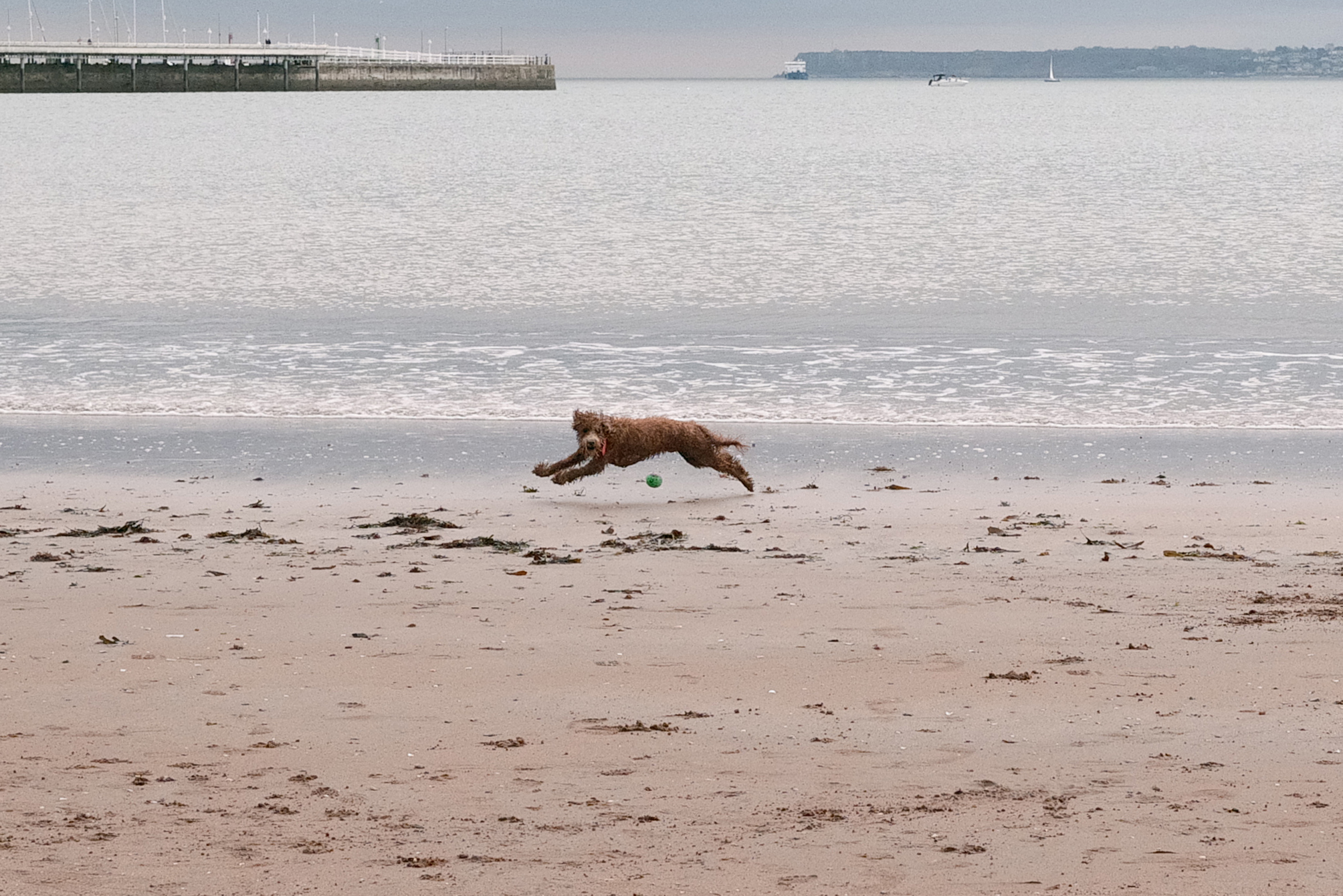
Even when photos are zoomed into, a lot of detail is retained, as you can see in the gallery above. I cropped into the photo of my partner and the dog in action, and both photos still look good. This is a small sensor so you can’t crop to extremes as you can with the Sony A1 II, for instance.
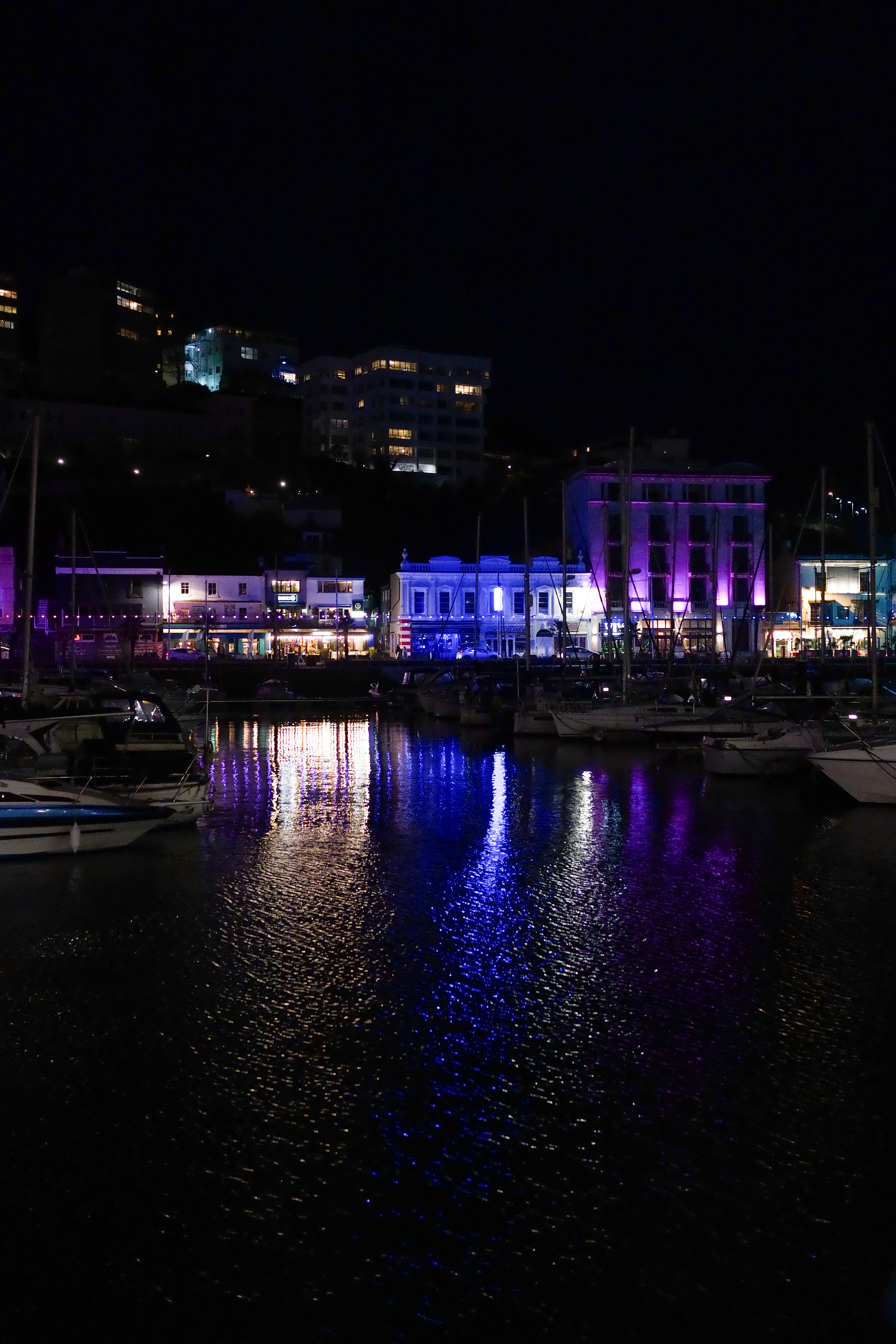
When you half-press the shutter button, the dial on the back lets you adjust the exposure compensation. You can then adjust the exposure quickly (±5 EV, in 1/3 increments). I actually found this genuinely useful, especially in low-light settings.
The photo above was shot at night, with the EV set to +0.7, and it came out lovely, especially the reflection of lights in the water.
Color profiles













Similar to many cameras that have color profiles/filters built in — Creative Look on Sony cameras, film simulations on Fujifilm cameras, and so on — the Sigma BF has 13 Color Modes. You can see examples and the names of the filters in the gallery above.
Sunset Red and Teal & Orange quickly became my favorite Color Modes. They remind me of Nostalgic Neg on Fuji cameras. The Monochrome Color Mode takes lovely photos too but I still prefer Fuji’s B&W Acros recipe.
These filters are great if you want to edit on the fly and quickly share photos to social media without putting them through a long winded post-production process.
Burst shooting
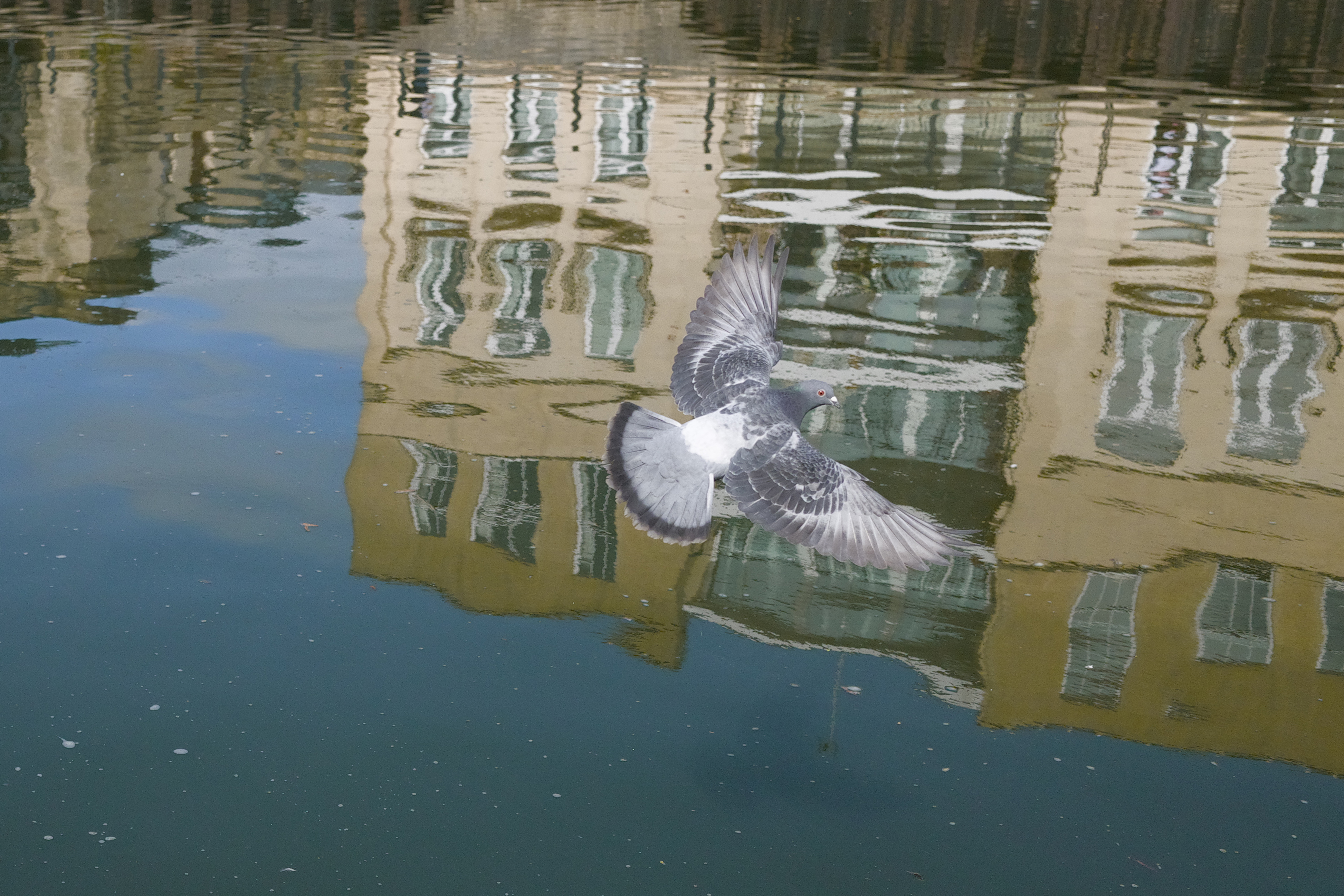
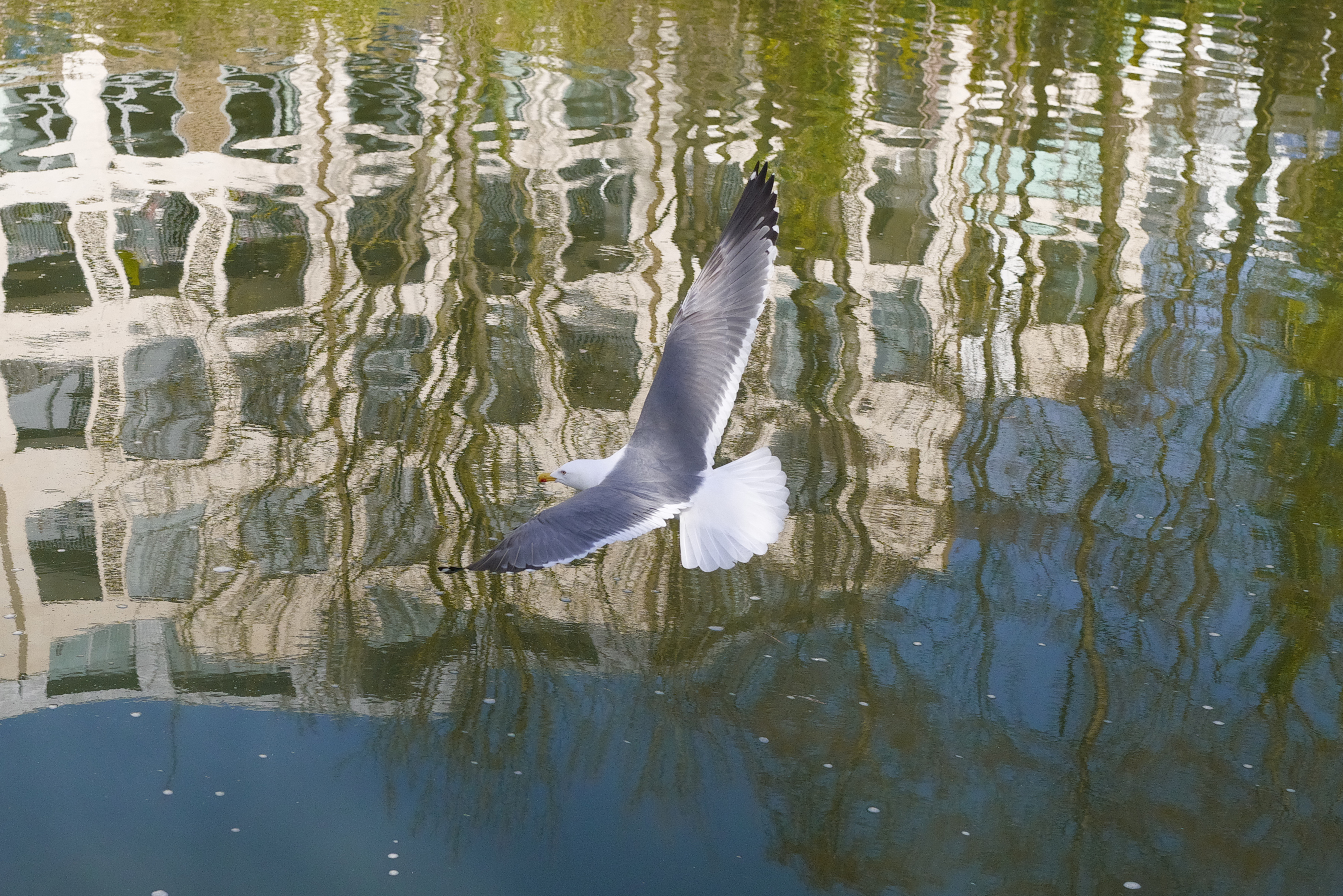



You can also shoot in bursts of 8fps at shutter speeds up to 1/25,600s. Like I said earlier, it’s not the fastest but when I put it to the test photographing birds in flight, the Sigma BF performed respectably. The photos above were taken at 1/12,800s, f/4 and ISO 800. All the birds are in focus, and their beaks and feathers look sharp and detailed.
If you want faster drives, the Sony A7 IV and the Sony A7C II both shoot 10fps while the Panasonic Lumix S5IIX shoots 30fps — the Lumix S5IIX is best equipped for high-speed shooting out of all these cameras.
ISO performance


As with other cameras I test at Tom’s Guide, I put the Sigma BF through an ISO test. The camera has a native ISO range of 100-102,400 for stills. The images above were shot at ISO6,400 and are the same photo — the first image in the gallery is a JPEG export of the DNG file, while the second is the straight-out-of-camera (SOOC) JPEG.
As you can see, noise starts to creep in but it doesn’t ruin the photo. The Sigma BF’s in-camera noise reduction works very well and as I was expecting for photos taken at a low ISO. Noise in the second photo has been reduced but sharpness hasn’t been totally destroyed by smoothing.
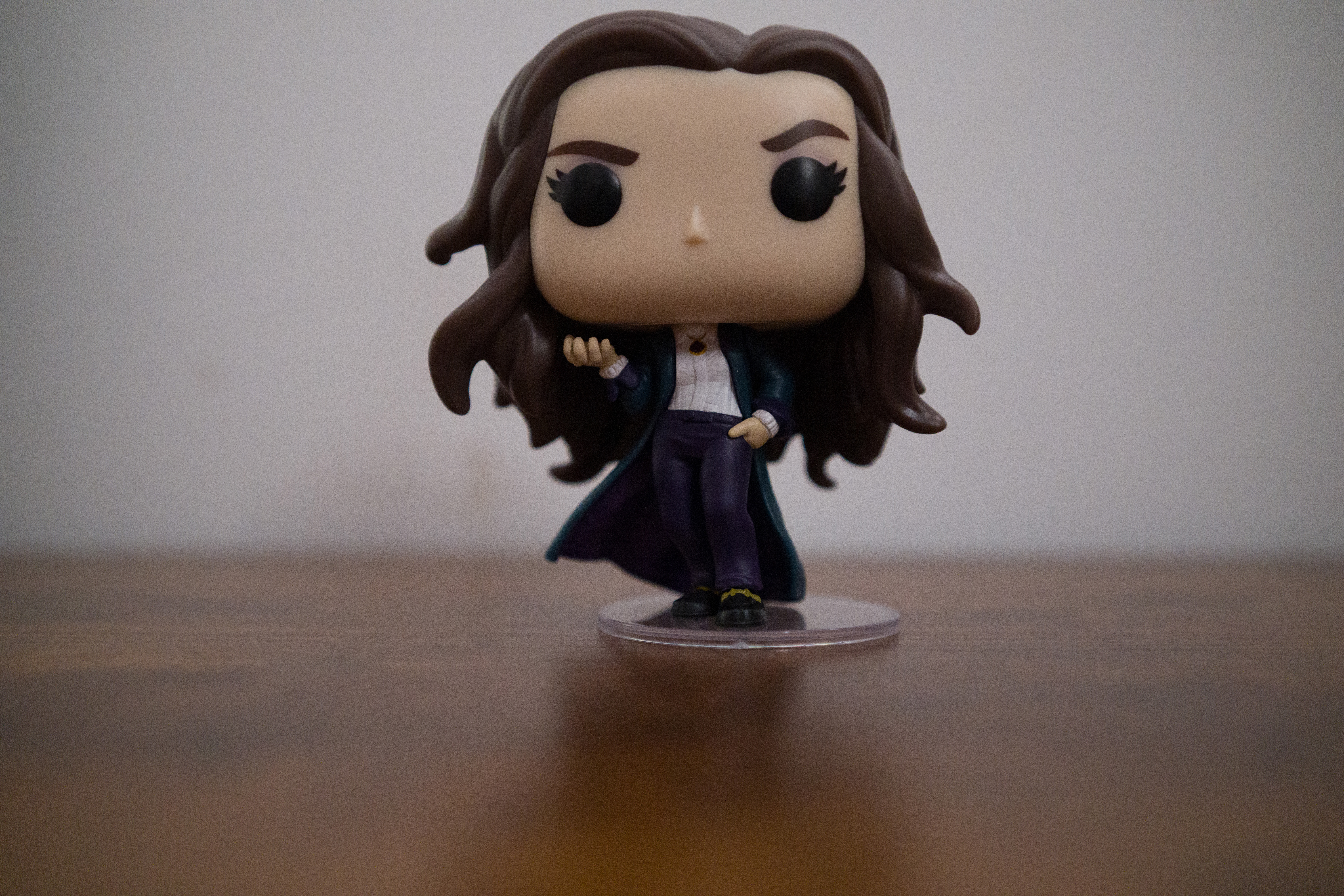

I then cranked the ISO up to 12,800. Again, the first image above is the DNG file and the second is the SOOC JPEG. And again, the Sigma BF has done well to reduce noise and grain without major detriment to sharpness. You’ve got a usable image once again.
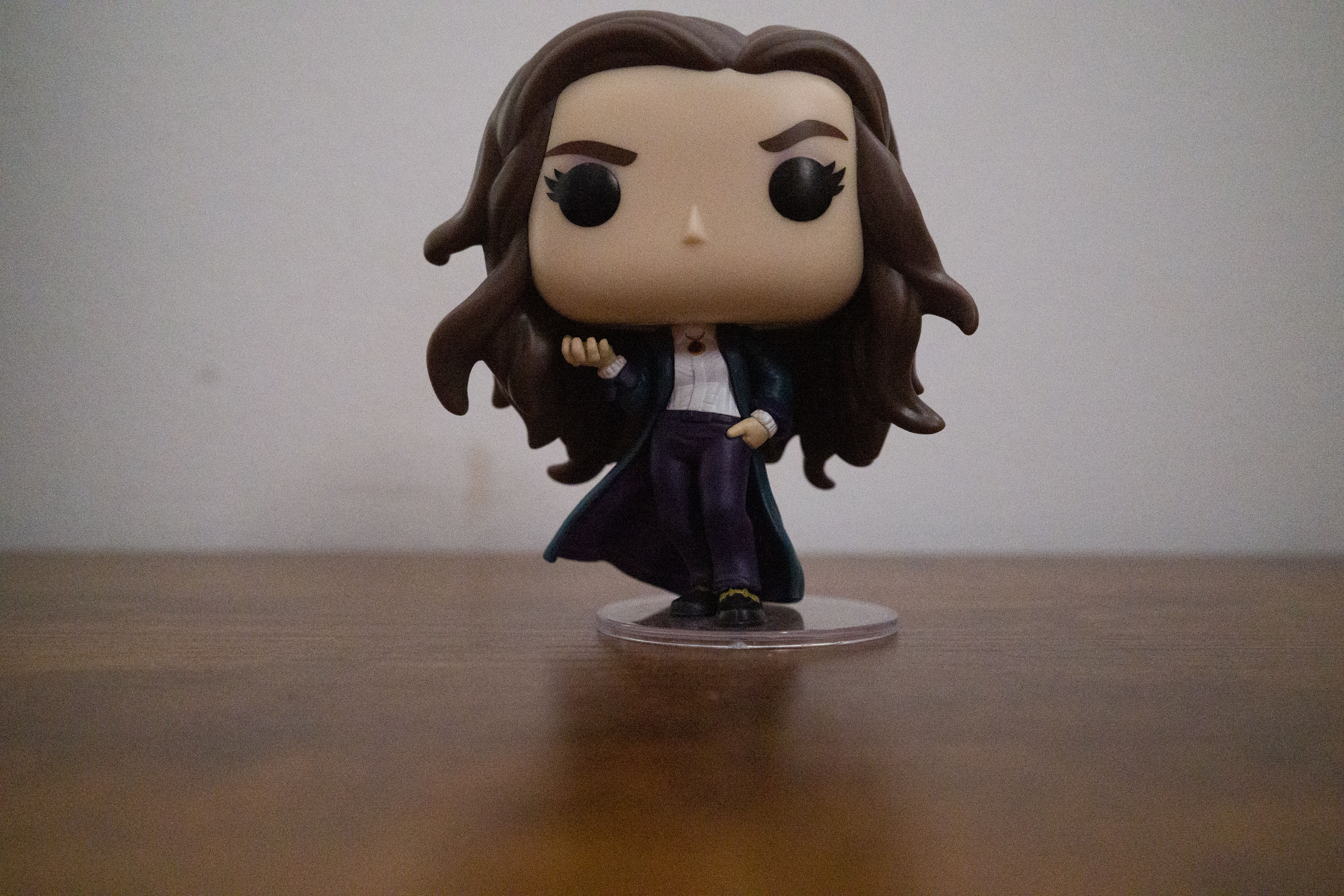
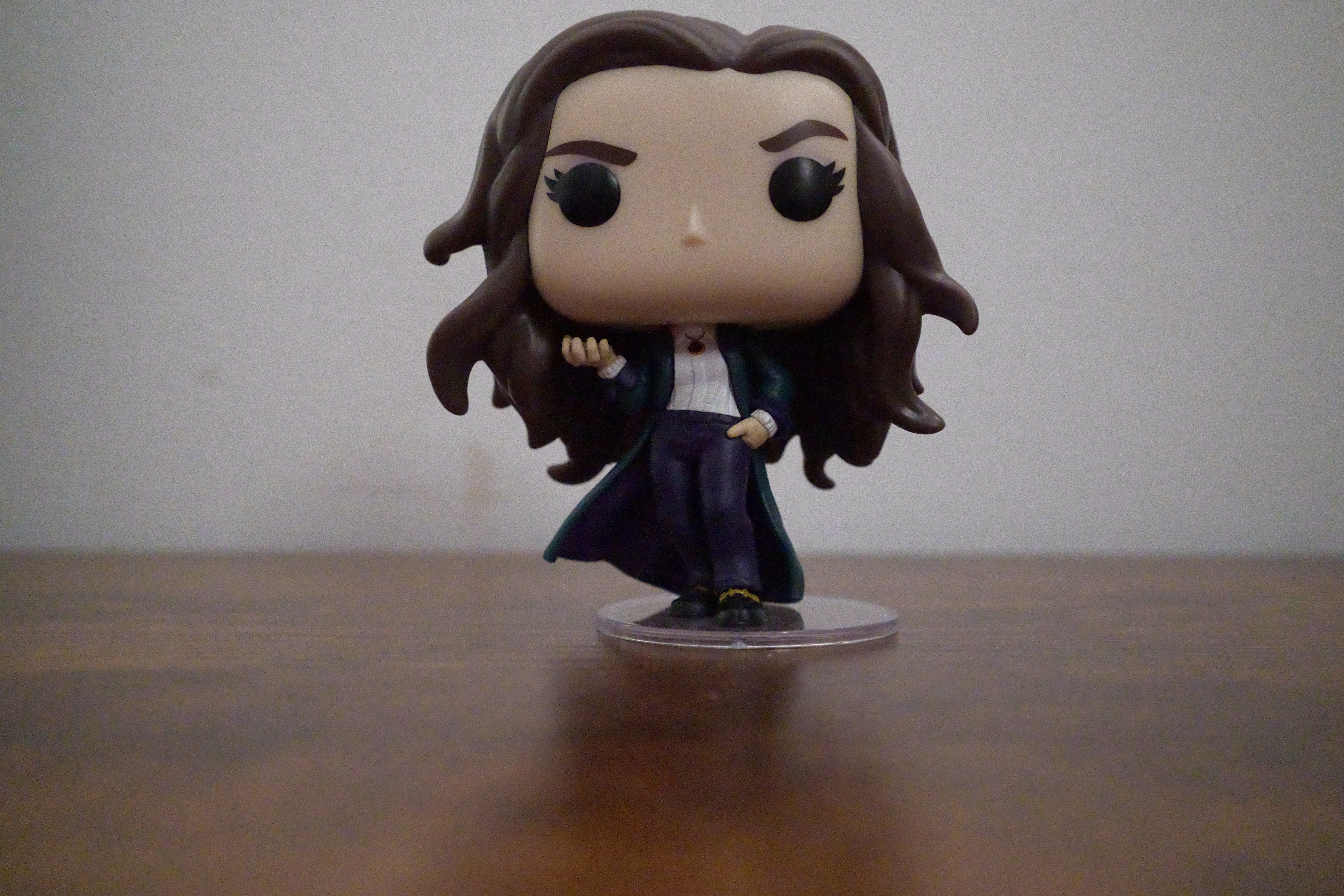
Bumping up the ISO to 51,200 on most cameras is where things start to get really noisy — to the point that the grain can’t be negated without seriously impacting the image. The Sigma BF, however, does a decent job of reducing noise. The first image above, which is the DNG image, is definitely noisy compared to previous shots but it doesn’t ruin the image.
The second image (the SOOC JPEG) also looks okay. You can see some noise in the bottom half of the image and there is some loss of fine detail, but it’s still usable. You should only be using such a high ISO as a last resort, and this is an extreme test pushing the camera to its limits.
Dynamic range
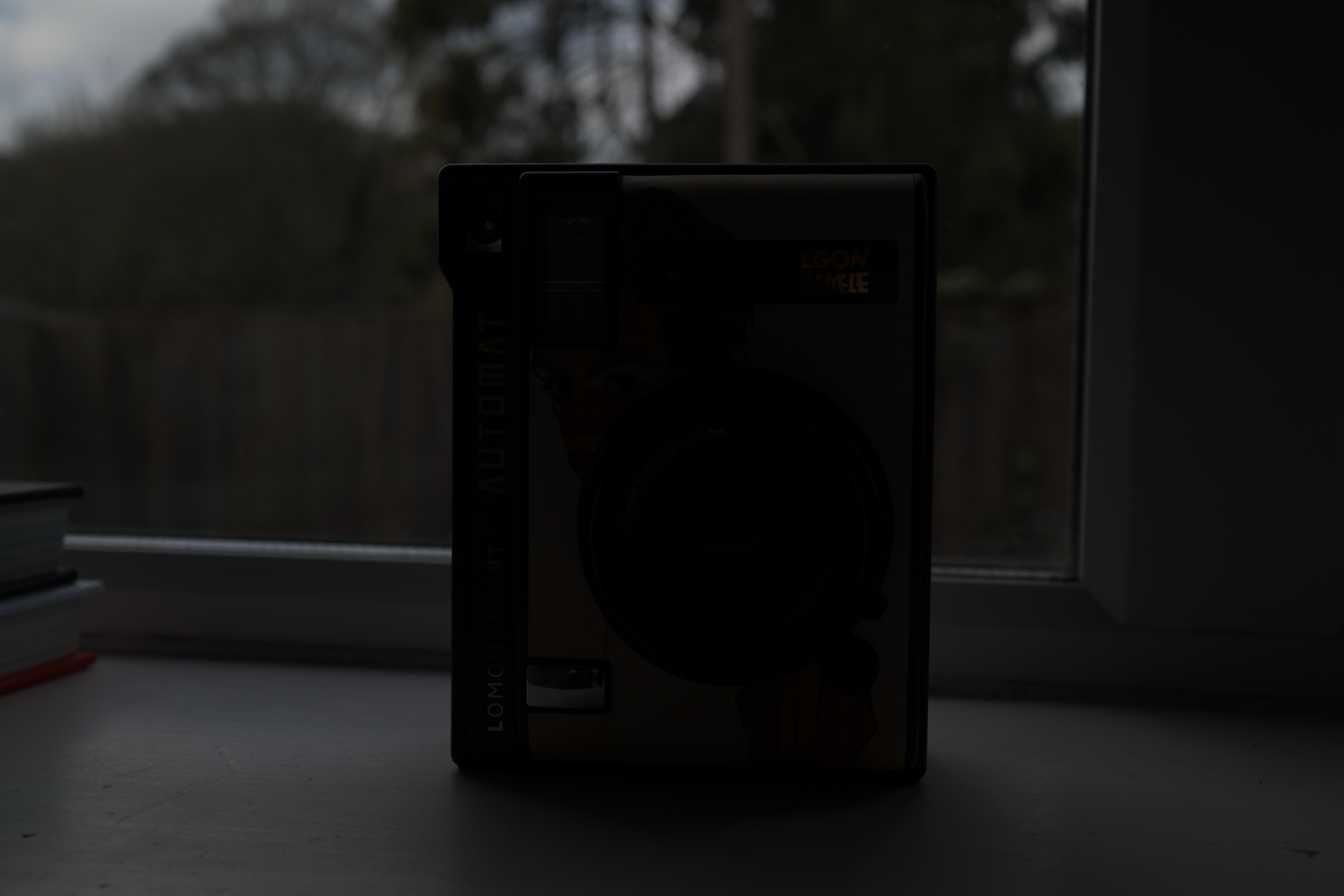
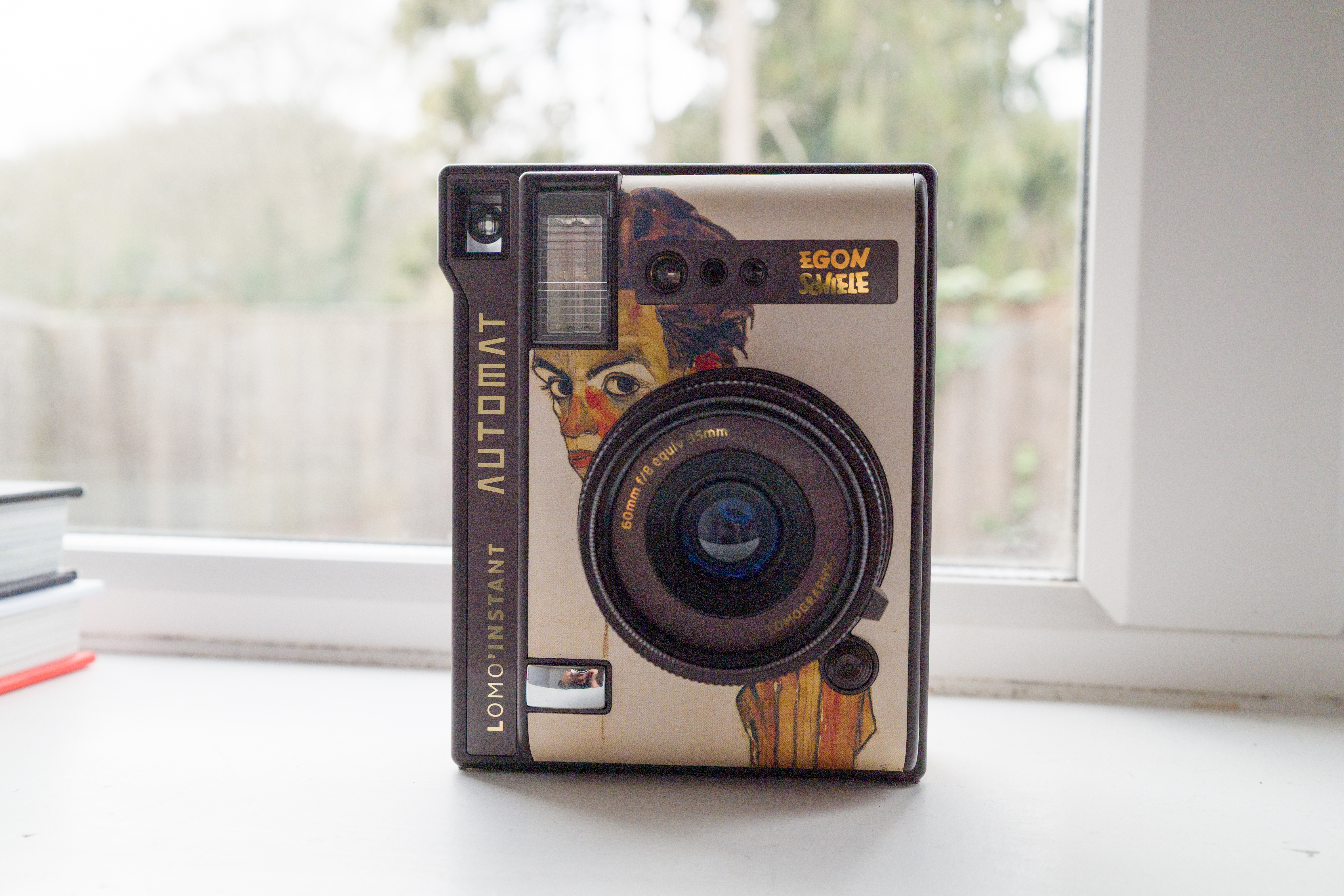
The Sigma BF’s dynamic range performance is fairly decent too. I took a backlit photo of an instant camera, as you can see above. The first photo is a JPEG export of the DNG file. The second photo is the same image but with shadows and exposure boosted in Adobe Photoshop Lightroom.
This photo was taken at ISO 100. The shadows aren’t very noisy and have been recovered well at the lowest native sensitivity. The highlights from the light coming through the window in the background are blown out and irretrievable, although this is an extreme test and in real-world scenarios RAW files give plenty of dynamic range to play with.
Sigma BF review: Video quality
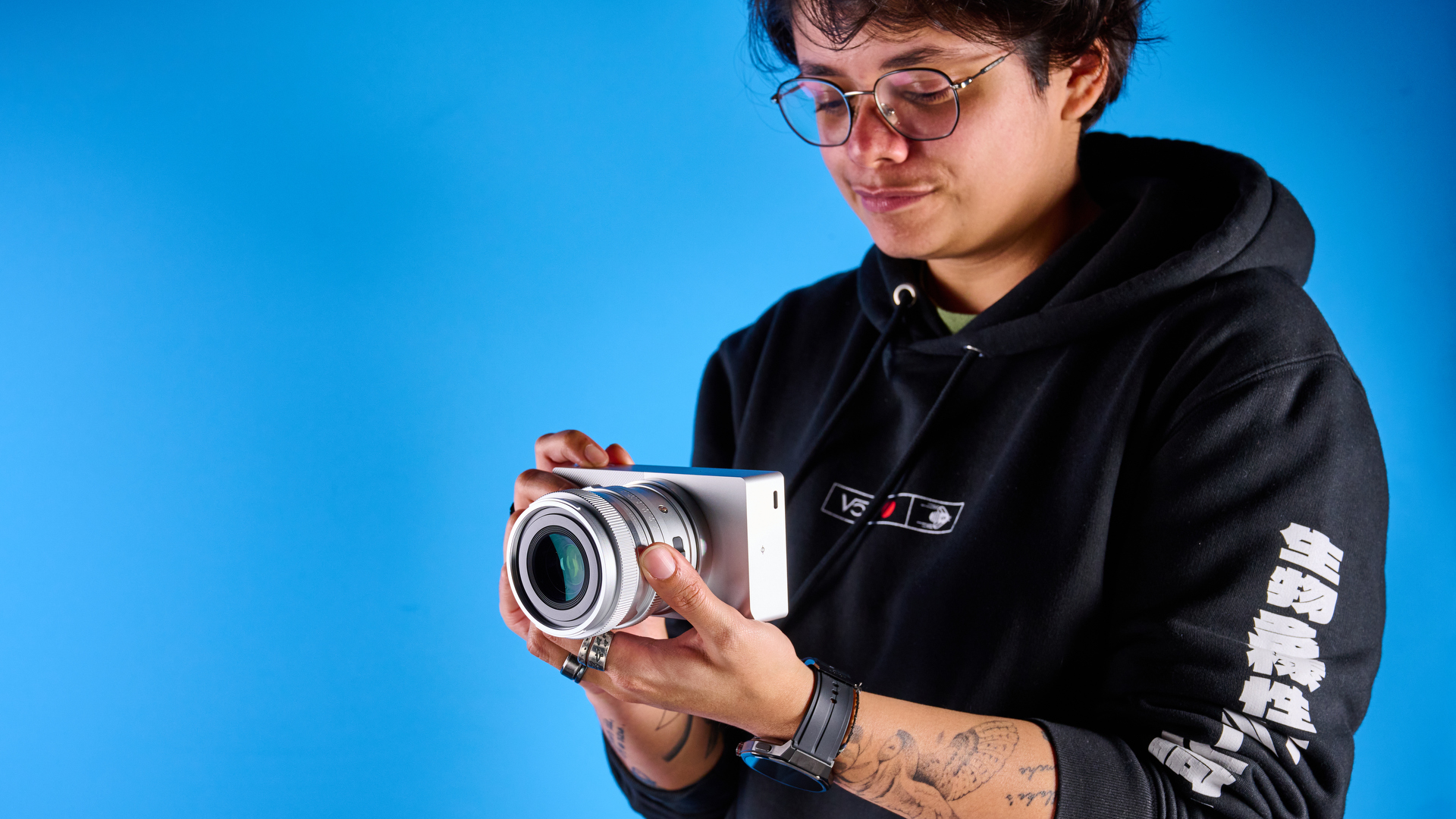
For casual videography, the Sigma BF boasts 10-bit color which means it’s capable of capturing a total of 1.07 billion individual hues, and 6K/30fps, 4K/30fps and FHD/120fps video.
I say ‘casual’ because serious videographers may find themselves limited by the camera’s internal storage if you’re looking to record purely video — 230GB sounds like a lot, but will be eaten up quickly at 4K+ resolutions, and with no way to expand storage, that’s your lot.
Also, the lack of a vari-angle tilt screen means you can’t shoot at awkward or low angles as you can with the likes of the Sony A7C II or the Panasonic Lumix S5IIX.
While the BF is a hybrid camera, it’s certainly stills-first, so I can forgive it not being a videography weapon. Besides, the video quality is gorgeous.
All 13 Color Modes are available when filming too. The compilation above was shot in the Standard Color Mode and with EIS disabled. The different colors of the waves and the sand have been captured accurately.
I also love the sounds the Sigma BF has recorded. The camera’s equipped with a stereo microphone. I particularly like the sound of the sea foam receding down the sand as you may not always hear it when recorded on, say, a smartphone.
If you want to get creative or want more freedom in post-production, you can shoot in L-Log which captures a wider dynamic range. You can then color grade it in Adobe Premiere Pro, for instance.
Sigma BF review: Battery life
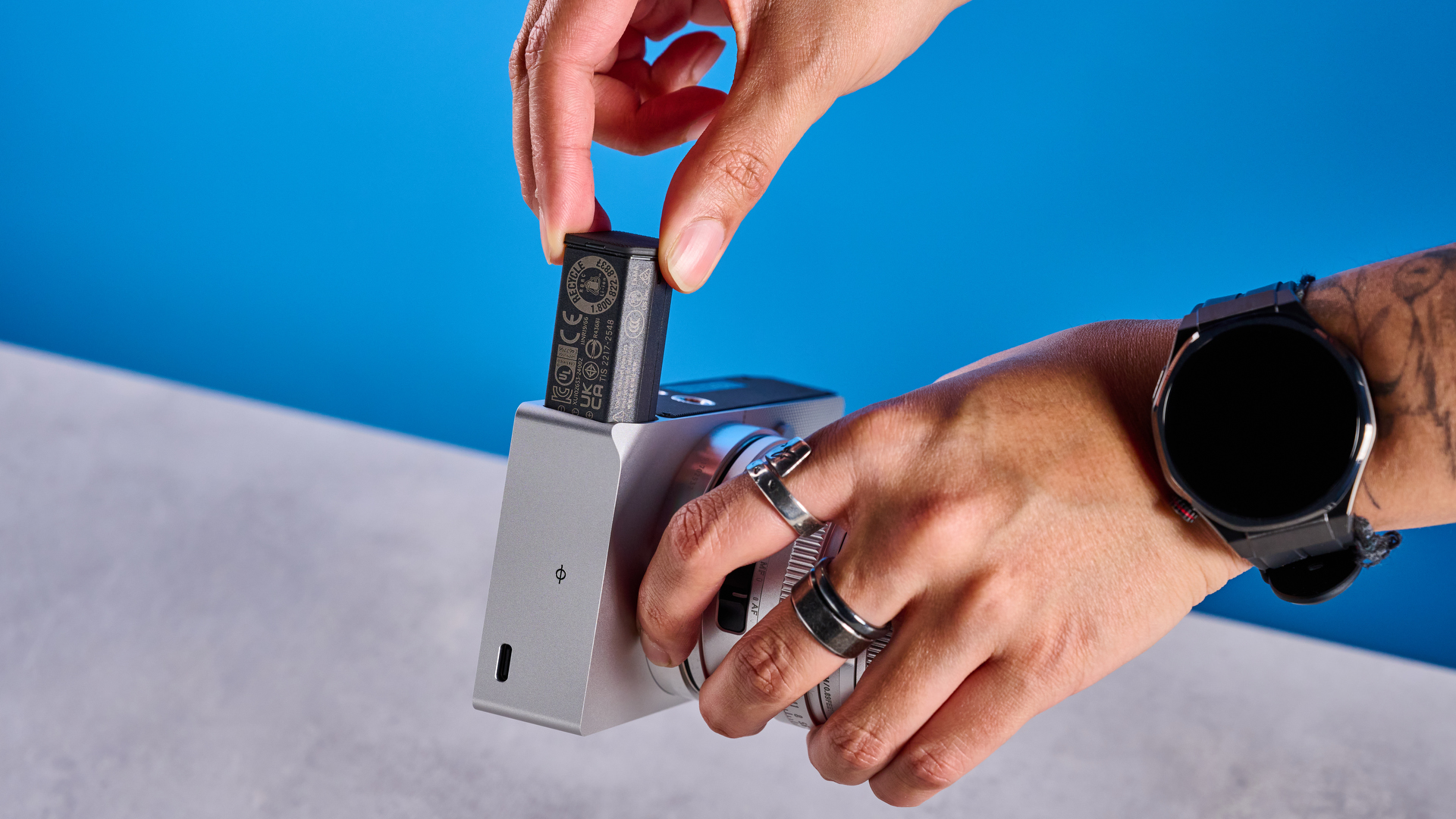
The Sigma BF uses a rechargeable BP-81 battery pack, and it has a CIPA rating of 260 stills. In my testing, a single charge yielded 289 shots, but the results will vary depending on usage conditions and it’s best to take the CIPA rating as a reference.
I also recorded continuous 4K/30P video indoors to gauge battery life. I was able to use the Sigma BF for 109 minutes before it died. The camera gave me no overheating warnings and I noticed a very brief period of it at the 50-minute mark. That’s quite impressive!
Compared to cameras in its price or features bracket, this is very underwhelming. The Panasonic Lumix S9 and the Nikon Z f are rated at 430, while the Sony A7 IV is rated at 580 and the Sony A7C II is rated at 530.
If you plan on shooting all day with the Sigma BF, I’d recommend carrying one of the best power banks or a spare battery (when Sigma launches one, eventually). Charging the camera from zero to 100% with a 65W charger takes just under two hours.
Sigma BF review: Verdict
If you want an aesthetically pleasing camera and one that will surely turn heads, then the Sigma BF is it.
I’ve fallen in love with its minimalist design and its luxurious feel. Its 24.6MP sensor takes detailed, sharp, beautiful photos, and the 13 Color Modes offer creative looks for every type of photographer. And hybrid shooters will enjoy 6K/30P and L-Log capabilities too.
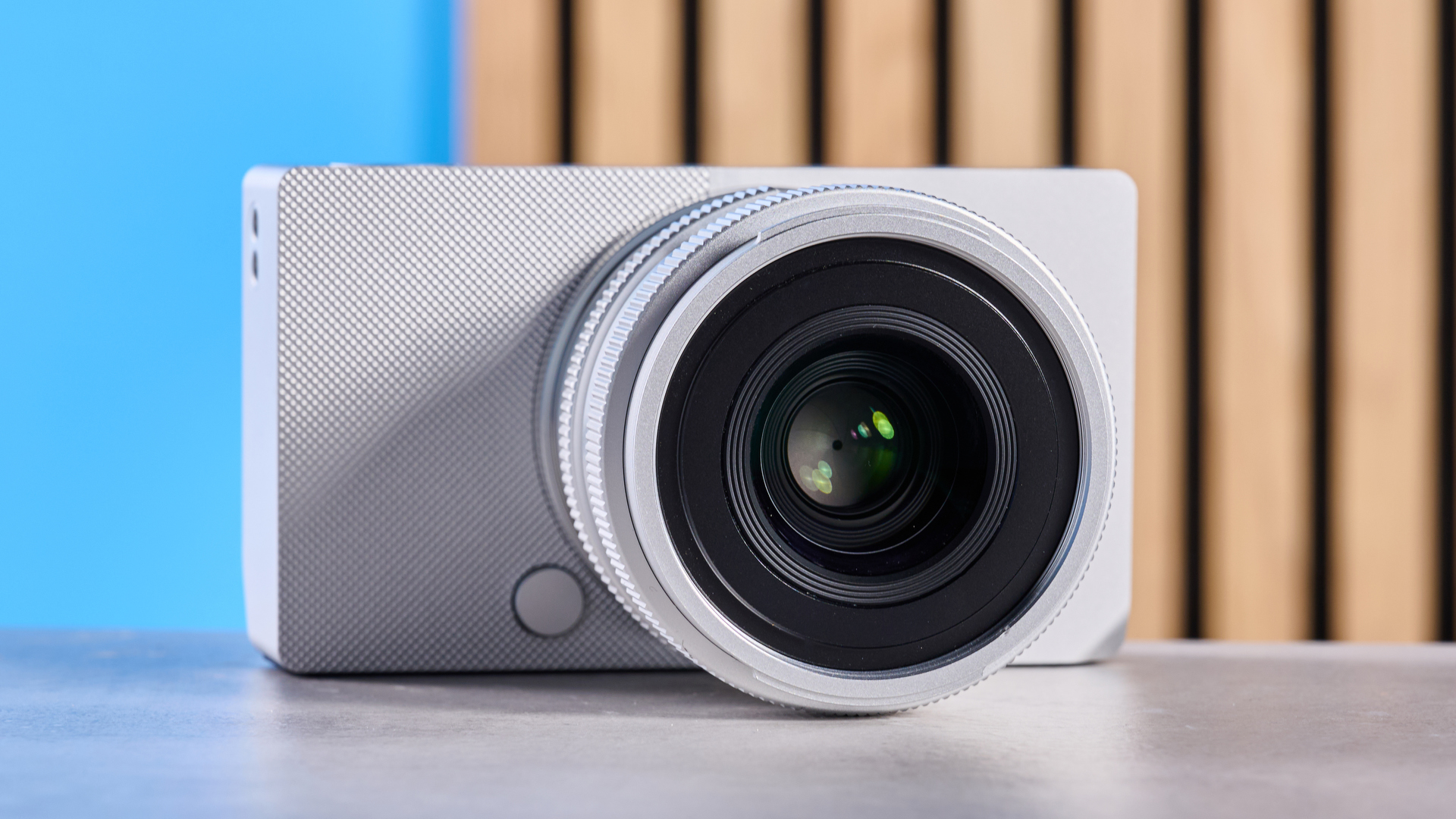
Its hybrid phase and contrast detection autofocus system accurately and quickly tracks human and animal eyes and faces, helping you get the shot you need. Color reproduction is faithful too. The cherries on top of the cake are the Sigma BF’s straightforward user interface and controls that simplify photography.
This camera isn’t without its shortcomings, though. While you get a whopping 230GB of internal storage, there’s no SD card slot to extend storage which can be problematic if you’re constantly shooting in 6K.
The Sigma BF doesn’t have the best ergonomics either, with single-handed use frustrating. The short battery life puts a damper on photography adventures too, and with no spare batteries available at the time of writing, you’ll need to remember a portable charger.
The Sigma BF has made photography fun for me again. Despite its flaws, it’s a very capable camera that takes gorgeous photos and simply having it in my hands makes me feel richer.

Nikita is a Staff Writer on the Reviews team at Tom's Guide. She's a lifelong gaming and photography enthusiast, always on the lookout for the latest tech. Having worked as a Sub Editor and Writer for Canon EMEA, she has interviewed photographers from all over the world and working in different genres. When she’s not working, Nikita can usually be found sinking hours into RPGs on her PS5, flying a drone (she's a licensed drone pilot), at a concert, or watching F1. Her work has appeared in several publications including Motor Sport Magazine, NME, Marriott Bonvoy, The Independent, and Metro.
You must confirm your public display name before commenting
Please logout and then login again, you will then be prompted to enter your display name.
